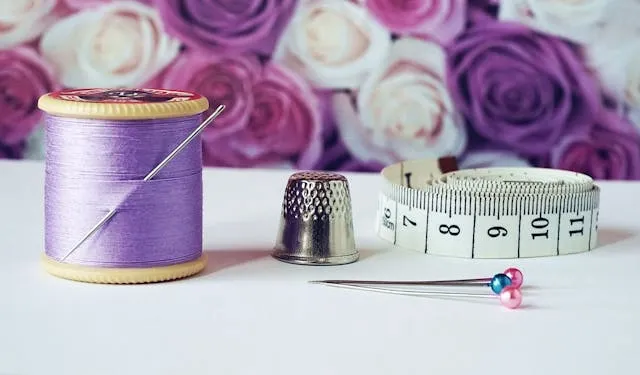How To Sew A Patch Onto A Shirt: Hand And Machine Techniques
Sewing patches on shirts is a simple but effective way to personalize your wardrobe or mend a tear. In this post, we’ll take you through the hand-sewing and machine-sewing techniques for how to sew a patch onto a shirt securely. Whether you’re a novice or an experienced crafter, these step-by-step instructions will help you achieve a professional-looking finish.

Key Takeaways
- Hand-sewing offers precise control over stitches, perfect for delicate fabrics, while machine-sewing offers speed and durability, ideal for large patches.
- It is best to secure the patch in place before sewing, either with pins or fabric glue. Aim to use a matching thread color and choose an appropriate stitch.
- Before sewing patches on shirts, prepare the shirt by washing and ironing and carefully choosing where the patch will go.
- We supply high-quality custom patches in a range of materials that are straightforward to sew onto shirts and other garments.
Table of contents
-
How To Sew A Patch Onto A Shirt
-
What Are The Best Sewing Techniques And Methods For Patches On Shirts?
-
How To Sew A Patch On Different Shirt Fabrics
-
What Are The No-Sew Tricks For Attaching Patches On Shirts?
-
What Tools And Materials Are Needed To Sew On Patches On Shirts?
-
What Are General Sewing Knowledge And Techniques For Beginners?
How To Sew A Patch Onto A Shirt
Knowing how to sew a patch on a shirt is important for both repair and decoration purposes. If you choose to sew by hand, you get precision and control, ideal for delicate fabrics and intricacy. Machine sewing, meanwhile, is faster and more durable, so it works well for sturdy materials and larger patches.
To sew a patch onto a jacket or shirt by hand, you must think carefully about the position and secure the patch in place using pins. You will need a needle and thread and some basic stitching skills to sew around the patch edges in small, even stitches. For machine sewing, you will need to configure your machine with a suitable needle and thread, then sew around the patch using a straight or zigzag stitch.
We will go into both techniques in greater detail.

How To Sew A Patch On A Shirt By Hand
To sew patches onto a shirt by hand, you will need a patch and shirt, a needle and thread, some fabric pins, and scissors. Here’s the basic process:
- Prepare the shirt: Make sure it is washed and ironed before sewing.
- Position the patch: Place the patch where you want it on the shirt and secure with fabric pins.
- Thread the needle: Cut a length of thread, thread the needle, and tie a knot at the opposite end.
- Start sewing: Start from the underside of the shirt so that the knot is concealed. Use a running stitch around the edge of the patch.
- Finish: Once you have sewn all around the edge, tie another knot inside the shirt and trim away excess thread.
Aim to keep your stitches tight and even for durability. You could even glue the patch to the shirt fabric for a stronger attachment.
How To Sew A Patch On A Shirt With A Sewing Machine
Here are the steps for how to sew on a patch with a sewing machine:
- Prepare the shirt: Wash and iron the shirt to ensure it has a smooth, flat surface for the patch attachment.
- Position the patch: Place the patch on the shirt and secure it in place with fabric pins.
- Set up your machine: Use a matching thread and a sewing machine needle designed for your fabric type. Configure it for a zigzag stitch or a straight stitch.
- Sew the patch: Start sewing around the patch edge, ensuring all stitches cover the patch’s border. A zigzag stitch will achieve the strongest hold.
- Finish: Secure the thread by backstitching at the start and end of the seam before trimming away excess threads.
If the fabric shifts during sewing, use a stabilizer or fabric guide. If the stitching looks uneven, adjust the tension or sewing speed.
What Are The Best Sewing Techniques And Methods For Patches On Shirts?
There are various techniques for how to sew patches on a shirt that incorporate hand-sewing and machine-sewing methods.
- Hand-sewing: The blanket stitch delivers a durable and decorative finish, while the whip stitch can be done faster but is a little less refined.
- Machine-sewing: The most versatile and reliable solution is the zigzag stitch, securing patch edges firmly to prevent fraying. The overlock stitch provides a strong, professional finish.
There are benefits to each method for swing patches on shirts. Hand-sewing is precise and great for delicate fabrics, while machine-sewing is faster and more robust. We supply a range of custom embroidered patches and other materials that you can personalize to seamlessly integrate with your shirts. And you can easily sew our patches on for a polished look.
What Stitch To Use For Patches On Shirts?
To sew a patch to a shirt, consider these stitch types:
- Zigzag stitch: Ideal for most fabrics, this stitch encases the patch edges to prevent fraying and deliver a durable attachment. It is a very versatile choice.
- Blanket stitch: Great for decorative patches like our custom chenille patches, the blanket stitch creates a handcrafted look that works for thicker fabrics.
- Backstitch: This achieves a strong, secure hold suitable for heavy-duty patches and fabrics. Its flexibility is limited, but it is reliable for ensuring a secure attachment.
Choose your stitch based on the patch size, fabric type, and desired aesthetic.
How To Attach Patches To Shirts Without Fraying
Sewing patches on shirts without fraying begins with applying a fray check or similar fabric sealant around the patch edges. This will prevent the fabric from unraveling. You can then use a zigzag or overlock stitch around the patch perimeter to secure the edges firmly and prevent lifting.
It is important to ensure your patch is well-anchored to avoid fraying over time. For even greater durability, consider using an iron-on patch that you can apply with heat application before sewing the edges. With these methods, you can achieve a clean, professional appearance that will stand the test of time.
Tips For Choosing Patch Placement And Design In 2025
Patch placement is key to making a style statement or effective repair. Trending in 2025, strategic placement near collars, cuffs, or along seams can create a unique sense of balance and visual interest on shirts.
Mixing patch sizes and layering smaller patches around a larger centerpiece can add a modern, personalized touch. For repairs, make sure patches fully cover damaged areas and blend with fabric texture for a seamless look.
Consider contrast stitching to highlight your patches as intentional design elements. Planning your patch layout before sewing helps to achieve a cohesive, stylish finish that aligns with current fashion sensibilities while enhancing garment function.
Choose the best custom patches for shirts
Custom embroidered patches create an iconic look on shirts, and you can design with us for personal or professional needs with high-quality craftsmanship and bulk options.
How To Sew A Patch On Different Shirt Fabrics
When sewing patches onto different shirt fabrics, it’s crucial to adapt your approach to the material in question. Learn the difference between iron-on and sew-on patches to find the right solution for your shirts.
- Cotton: Use a zigzag stitch on your sewing machine to secure the patch with flexibility and no fraying.
- Denim: Use a strong, straight stitch with a needle suitable for heavy fabrics to achieve a secure attachment.
- Knits and jerseys: Use a stretch stitch or narrow zigzag to accommodate the fabric’s flexibility with no puckering.
Always pre-wash and iron the fabric to ensure the patch attaches smoothly. Test your stitching on a scrap piece of fabric if possible - this will ensure the best results for your shirt’s material.

How To Sew A Patch On A Polyester Shirt
There are unique challenges when it comes to sewing a patch onto a polyester shirt. The fabric tends to shift and is sensitive to heat, so you must be careful. Tackle these issues by using a ballpoint needle designed for synthetic fabrics - this will help prevent snags and ensure smooth stitching. Also, opt for a polyester or nylon thread to get the appropriate strength and flexibility for the material.
Secure the patch in place with fabric adhesive so that it doesn’t shift during sewing. We recommend a narrow zigzag stitch on your sewing machine to ensure the patch edges attach securely and no puckering occurs. If you press the patch afterwards, use a low heat setting on your iron to avoid damaging the polyester. Consider testing the stitching on a scrap piece of fabric first to fine-tune your technique.
How To Mend A Hole In A Shirt Fabric By Hand
If you get a hole in your shirt, you can mend it by hand using patches with the following method:
- Select a patch: Explore our custom patches to find a fabric that matches your shirt’s material for a seamless repair.
- Prepare the area: Trim away loose threads around the hole and iron flat.
- Cut the patch: The patch size should be slightly larger than the hole. You could also order a custom patch in the appropriate dimensions for the perfect fit.
- Attach the patch: Position the patch over the hole and pin it in place.
- Sew around the edges: Use a needle and thread that matches the shirt color. Use a backstitch or blanket stitch to achieve a strong hold.
- Finish: Trim excess fabric and press gently with an iron.
It is essential to match the patch material to the shirt fabric for a neat and durable attachment.
What Are The No-Sew Tricks For Attaching Patches On Shirts?
For no-sew methods to attach patches, consider the following solutions for how to apply patches without sewing:
- Fabric glue: You can add fabric adhesive to the back of the patch and press it onto the shirt, following the manufacturer’s instructions for drying times. This is an easy solution that works on most fabrics.
- Iron-on patches: We supply iron-on patches that come with heat-activated backings to attach to your shirts. Design and order your patch, then place it on the shirt, cover with a pressing cloth, and apply heat and pressure with an iron as directed.
- Velcro: Our 2-part Velcro patches are very effective for achieving a robust but detachable adhesion that allows you to switch up your look whenever you want to.
These no-sew approaches are suitable for various fabrics and occasions.
Need to brand your shirts for professional applications?
Our custom brand patches can be personalized with your logo and colors to create the perfect addition to uniforms and merchandise for a strong visual identity.
Create your designWhat Tools And Materials Are Needed To Sew On Patches On Shirts?
To sew a patch onto a shirt, you will need:
- Needle: Select a sharp, medium-sized needle that is suitable for your fabric.
- Thread: High-quality polyester or cotton threads in a matching color are ideal.
- Fabric scissors: These are needed to trim the patch and thread.
- Pins: Use these to secure the patch in place before sewing.
- Iron: Press the patch and smooth out wrinkles after attaching.
Make sure you choose durable, color-matching thread for a seamless aesthetic. High-quality needles are also best to prevent fabric snags. And opt for fabric scissors that cut cleanly to avoid fraying.
With these tools, you can achieve a neat, long-lasting patch application.
How To Care For Sewn-On Patches To Prolong Their Life
After you sew a patch onto your shirt, you will need to care for it to maintain its appearance and durability. Always wash the shirt inside out on a gentle cycle with cold water to reduce wear on both the fabric and the stitching.
Here are some more tips:
- Avoid harsh detergents or bleach as these can degrade threads and fabric adhesives.
- After washing, opt for air drying or use a low heat setting in the dryer to prevent shrinkage or lifting.
- If your patch includes delicate embroidery or unique materials, consider spot cleaning to preserve detail.
- Iron patches on a low heat setting with a pressing cloth to avoid melting or distortion through direct contact with the patch surface.
Follow these care tips to ensure your patch remains vibrant and securely attached for years to come.
What Are General Sewing Knowledge And Techniques For Beginners?
Beginners will need to master basic sewing techniques to sew a patch on a shirt. Start with these foundational skills:
- Threading the needle: Practice doing this and tying knots, as this is essential for secure stitching.
- Stitches: Learn the straight stitch, zigzag stitch, and backstitch. Each serves a different purpose, but they are all fundamental techniques.
- Seam allowance: Learn about seam allowance - the extra fabric beyond the stitch line.
- Pressing: An iron helps press the seams flat to achieve a professional finish.
- Patterns: Follow patterns with care and practice cutting fabric accurately to avoid mistakes.
These techniques ensure you have a strong base for achieving precise and successful outcomes. Learn them well before you attempt to sew a custom patch for sweatshirts or shirts.
How To Easily Sew Patches And Holes
Learning how to sew patches to mend holes on shirts can be simple with the right tips. Start by selecting a patch material that matches the texture and thickness of your material for a seamless look. Use some fabric adhesive to temporarily secure the patch in place, and use a sewing machine where possible to achieve quicker and more uniform stitches. If you are applying a smaller or more intricate patch, hand-sewing can also work, with a simple running stitch or backstitch.
The most common mistakes are as follows:
- Using mismatched threads
- Failing to secure the patch properly
- Uneven stitching
We suggest that you test your needle and practice your stitching on a scrap of matching fabric first. Before you start the job, trim frayed edges around the hole to ensure a clean finish.

How To Start Sewing By Hand
It can be a rewarding skill to start sewing by hand, and anyone can learn with practice. To start, you will need to gather the basic tools:
- Needles
- Thread
- Scissors
- Fabric scraps
- A thimble
Begin with simple practice exercises like threading the needle and tying a knot at the end of the thread. You will need to educate yourself on basic stitches like running stitch, backstitch, and whipstitch. Practice them on fabric scraps to buid confidence and improve your stitch consistency.
A good exercise for beginners is to sew straight lines on a piece of fabric. Aim to get even spacing and tension. As you progress, try sewing a simple project like a fabric bookmark or a small pillow. Stitches should be kept neat and evenly spaced, so take your time to develop a steady hand.
Create custom patches that attach to shirts easily
Our custom iron-on patches are easy to apply to shirts with a lasting attachment. And you can personalize the design with intricate details and vibrant colors in any material.
Frequently Asked Questions About How To Sew A Patch Onto A Shirt
How Do I Sew Patches On A Shirt?
You can use hand-sewing techniques or a sewing machine to stitch patches on a shirt. Hand sewing is great for intricate projects as you have greater control over the stitches, while sewing machines are faster and more efficient.
What Techniques Can I Use To Sew Patches On A Shirt?
With hand-sewing, we recommend using a running stitch, backstitch, or whipstitch around the edges of the patch. With a sewing machine, choose a zigzag stitch or straight stitch. Aim to match the thread color with the shirt fabric.